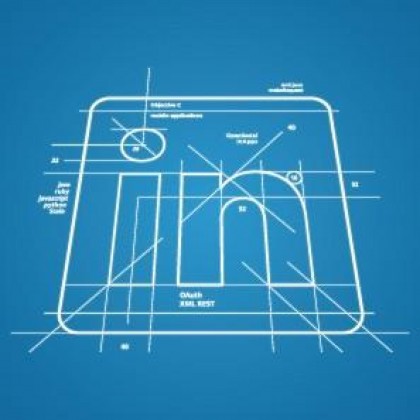
by MIMO Solutions | Internet Marketing, Smarketing Blog, Social Media Explained, Social Networking
We will be hosting a special LinkedIn Workshop for Sandler Training Kansas City on March 20th, from 8am-10am.
This workshop is perfect for:
- Salespeople who don’t actively prospect on LinkedIn
- Executives looking to use LinkedIn to enhance their reputation
- Young professionals looking to grow their network
- Not-so-young professionals who have yet to embrace social media
[av_button label=’Click here to register!’ link=’manually,https://secure.sandler.com/eventcalendar/show/?prid=169401×tamp=1395327600&siteid=75368′ link_target=’_blank’ color=’theme-color’ custom_bg=’#444444′ custom_font=’#ffffff’ size=’small’ position=’center’ icon_select=’yes’ icon=’ue881′ font=’entypo-fontello’]
Ready to take your prospecting to a new level?
If you want to learn how to systematically used LinkedIn to significantly impact your business, make plans to attend this special 2-hour workshop.
This session is designed to show you not only how to utilize LinkedIn as a powerful, proactive prospecting tool, but also as a way to get introductions to hard-to-reach decision makers and actually set appointments with new prospects in your calendar each week.
Learn How To…
- Put a system in place to make LinkedIn pay off for you
- Make LinkedIn prospecting replace your cold calls
- Gain successful introductions from your connections
- Grow a significant LinkedIn presence and attract new prospects
- Use the features of LinkedIn that will make you kick yourself for not knowing until now
- Stop passively using LinkedIn and take control of the amount of introductions and referrals you get!
 Presented by Mike Montague
Presented by Mike Montague
 View Mike Montague’s LinkedIn profile Mike is our resident Internet Marketing & Social Media Expert. He has worked as the Promotions & Website Coordinator for Cumulus Radio Stations and the Chiefs Radio Network, and Internet Marketing Director at Ad Trends Advertising. He has consulted for several international franchises and hundreds of small businesses, and spoken to countless groups about maximizing social media and the rest of their Internet presence. Mike is an associate at Sandler Training, where he provides training and coaching on management, sales and customer service. With over 230 offices in 28 different countries, Mike has collected LinkedIn prospecting best practices from around the world to share with workshop participants.
View Mike Montague’s LinkedIn profile Mike is our resident Internet Marketing & Social Media Expert. He has worked as the Promotions & Website Coordinator for Cumulus Radio Stations and the Chiefs Radio Network, and Internet Marketing Director at Ad Trends Advertising. He has consulted for several international franchises and hundreds of small businesses, and spoken to countless groups about maximizing social media and the rest of their Internet presence. Mike is an associate at Sandler Training, where he provides training and coaching on management, sales and customer service. With over 230 offices in 28 different countries, Mike has collected LinkedIn prospecting best practices from around the world to share with workshop participants.
See what past participants have to say about attending Maximize LinkedIn:
“This was 2 hours well spent to receive practical steps on how to use LI for business development. I gained a lot of knowledge about how I can use LI to leverage my network and build a new list of prospects. Money and time well spent!” — Andrew Spottswood, Sr. Technology Consultant at Nuvodia
“The LinkedIn Seminar was very insightful and proved to be useful as a tool for prospecting. I really enjoyed the section on how your profile should be built as that is often something that my prospects and networking partners view and it was a good reminder to make sure that I have that buttoned-up on my end. I never realized that some of the search features existed and I immediately employed those when I returned to my office. LinkedIn for me in the past has been a side item but this seminar helped me understand that it can play a more active and strategic role in my sales efforts.” — Brittney Hurst, Manager of Business Development at American Express
“The LinkedIn Boot-camp at Sandler Training provided everyone the technical aspects of LinkedIn, but reminded us about the “human factor” as well. LinkedIn is simply a tool used to make a connection, and they demonstrated how it can be used not just to connect, but to engage. I would recommend this class to anyone, regardless of their experience with LinkedIn.” — Steve Alexander, CEO Space
Maximize LinkedIn is Thursday, March 20th, 8-10AM
 Investment: $149
Investment: $149
Register now and get a FREE copy of Five Minutes With VITO to help you learn how to get and maximize appointments with the Very Important Top Officer. Seating is limited to the first 25 registrations.
Sessions are held at Sandler Training, 4824 NW Gateway, Riverside, MO 64150. Leave your laptops at home and come prepared to discuss your challenges with using LinkedIn for prospecting…
[av_button label=’Click here to register!’ link=’manually,https://secure.sandler.com/eventcalendar/show/?prid=169401×tamp=1395327600&siteid=75368′ link_target=’_blank’ color=’theme-color’ custom_bg=’#444444′ custom_font=’#ffffff’ size=’small’ position=’center’ icon_select=’yes’ icon=’ue881′ font=’entypo-fontello’]
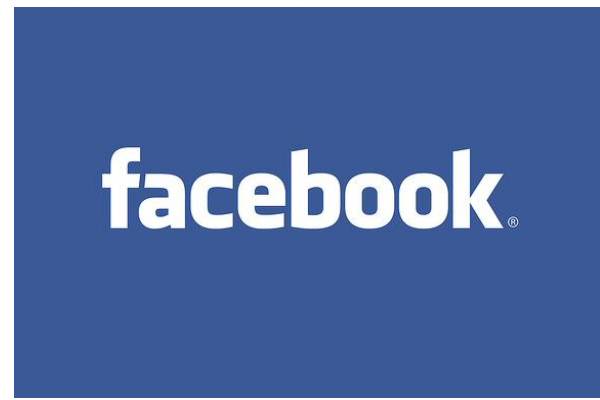
by MIMO Solutions | Internet Marketing, Social Media Explained, Social Networking
Here is everything you need to know about Facebook if you are running a small business:
Facebook is the king of social networks. I am getting annoyed with articles and videos that tout the number of people on Facebook, so I am just going to assume you have heard of it and you know it is a big deal. Facebook is all about the “like.” If you “like” a person, you become friends with them. If you “like” a business, you will follow them and get their updates. If you “like” a post, picture, website, product, update, story, or anything else, then it will tell all your friends that you like it. There is NOT a “dislike” button on Facebook, so the key to being successful is being
Likeable.
For small businesses, there are a few things you need to know. First, if you don’t have a plan for dealing with Facebook, you are missing out on a chance to connect with potential clients. Second, hardly any small business actually do have a plan of attack for Facebook, so it’s not too late. Finally, on Facebook there is a very fine line between the business and personal aspects of the site, so it is best to draw a hard line for yourself and your employees.
Here are the advantages of using Facebook compared to other social networks:
- Your audience is on Facebook, because pretty much everyone is.
- Facebook can target users much more effectively than other forms of advertising because it has so much information about its members.
- Being “liked” is a really good way to generate referrals, reviews and recommendations from your customers. Facebook shows people when one or more of their friends like something. This is called “social context.”
- Facebook is generally a long-term relationship with your customers, so when someone likes you, they will see your updates for as long as you are connected, which is until they un-like you.
- There are many applications, tools, and features on Facebook to help you connect and take advantage of the relationships.
- You can easily share links to your website, photos, videos, and other information with your fans.
- Since recently going public, Facebook is attempting to become very business friendly add dashboards, stats and extra advertising opportunities to help you reach new customers, engage current ones, and track how many people see and interact with your posts and pages.
- Those stats help because with so many people and so many updates every second around the web, it is hard to even tell if people see your update in their news feed. Typically, posts stay relevant for about 24 hours, but Facebook tracks them for 3 days.
 Getting started on Facebook for small businesses:
Getting started on Facebook for small businesses:
- The most important thing to do is separating your personal and business life by creating a business page. Do this as soon as possible. Chances are that you have already received friend requests from clients, prospects, referral partners, and people trying to sell you stuff. Help mitigate that keep your personal information and posts personal, by setting up a business page.
- If you scroll to the very bottom of the Facebook website you will see a link to “Create A Page.” If you visit a business’ fan page, you will also see the link in the upper right of the page. Click it and begin filling out the profile just like you did for yourself. Make sure you select the correct type of page, because the features differ for celebrities or topics and local businesses.
- Work on completing as much of the profile and information as possible. Be sure to include your address, phone, and website. Upload lot of pictures, any videos you have, and share links to your blog and any other websites you have.
- Use the Admin panel at the top of your page to monitor your progress and invite your contacts to like your new page. You can only invite your Facebook friends at this point, but that is OK, just click invite to send a message to anyone you think that would be interested. This is also where you will see notices about new people who liked you, and any comments on your posts.
- Click on “Build An Audience” to start promoting you page. Invite friends and email contacts, and don’t forget to share it on your own personal wall. Those are free, but you can also create a Facebook ad to promote this page to people you are not connected with.
- There are two types of ads on Facebook that you need to know about: Page Ads and Promoted Posts. Basically, you can just advertise for people to visit and like you page, or you can advertise one of your status update posts to have it appear in more people’s news feeds. I have seen both work very well, but I would not run a Promoted Post unless you have a really good post. If you post about an upcoming event, contest, coupon, or really great article, then go for it. If it is just an average here-is-something-we-did post, then you will see better results from the generic Page Ad.
- Start by using the regular Page Ads to start building your audience. These are just pay-per-click ads that promote your page to anyone on Facebook. The targeting options are very cool, so make sure you set them very specific for your target market. You will need to start here because the next two options work better when you already have people liking your page. I would recommend running this basic add until you have about 500 fans, and then switch to the next two.
- Promoted Posts need to be set up immediately after posting. This advertising option is only available for 3 days after your original post so plan ahead. Compose your really great offer or post and submit it, then immediately click create an ad at the top of the page and choose the post as your advertisement. Select the demographics and budget and you are on your way.
- Use Page Ads with social context to build the number of likes for you business. This campaign I recommend running continuously with at least a small budget. It is called the “Friends of Fans” option. This ad will only appear to people who are friends with someone else who has liked your page. This is a great option because the price is lower on the smaller audience, plus people who like you are more likely to know someone else who needs your company. Another benefit is that those friends who see the ad will get a bonus recommendation from the friend who likes you, it is like an automatic referral. Again, this is called “social context” because when someone sees your ad, the also see a social friend who likes the company and it puts it into context for them.
- Create a calendar around how often and what you post to your business page. Most people struggle with what to post on their business page, but if you plan ahead and create a regular calendar for updates you will get the hang of it. You can post product announcements, new hires, press releases, industry articles, recommended books, testimonials, quotes or thoughts of the day, and all kinds of things depending on what you think your audience would like to see. The important part is to post on a regular basis so people know what to expect. Shoot for at least once per day, and up to 3 times. Don’t go over that unless you have fanatics and very large audience who need information more than that.
- Use the 80-20 rule for posting advertising and marketing messages. No one likes to be bombarded with ads, but it is OK to ask for the order ever once in a while. Facebook is a social network, so think about it like a business networking event. No one would talk to the guy who just walked around saying, “Buy from me!” the whole time. About 80% of your posts should be interesting information that people would “like,” and the other 20% of the time try to make an offer or call-to-action that people would share with their friends or would “like” to receive.
When developing your marketing plan for Facebook, think about what people “like.”
Remember, there is no “dislike” button so controversial topics or negative posts about something don’t work very well. Have you ever seen someone share bad news like their dog passed away, and people click “like” on the post? It doesn’t make any sense… Think about what information and messages would cause someone to say, “Hey, I like that!” They also would need to want their friends to know that they liked it, so keep that in mind as well.
How can you be likable and take advantage of being liked? That is the key question you need to answer before beginning a business campaign on Facebook.
Finally, I began by mentioning that you want to separate your business and personal accounts. I would encourage all business contacts to like your page, and not add them as a “friend.” Some people hate hitting the ignore button and not adding someone, but it is truly what is best for your business. Ask yourself if you really want this person to see updates from your mom or pictures of your kids. Your personal friends are going to share a lot of information and tag you in pictures that are not business related. I find it best to clearly define who is a “friend” and who is a business associate.
Not all people have taken this approach yet, but I think in the near future, you are going to see a lot of issues and un-friending of business contacts. With the massive amount of people on Facebook, less is more when it comes to friends. Anyone can follow your business page, and they will only see your business updates, but be choosy about who you let see your entire personal life. And how much time you spend on Angry Birds or Farmville…
If you need help setting up your business Facebook Page, just shoot me an email and I will help.
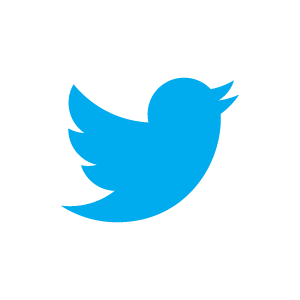
by MIMO Solutions | Internet Marketing, Social Media Explained, Social Networking
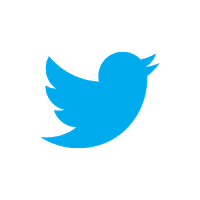
Twitter Explained for Business
Here is everything you need to know about Twitter for small business:
Twitter is an interesting social network designed to help you find out what’s happening, right now, with the people and organizations you care about. For small business, that means two things. You should use Twitter to keep track of news and new information about what’s happening in your industry. Plus, you should be using it to help people who care about you and your business keep up with what’s happening in your organization.
Twitter is all about the status updates, and limits posts to 140 characters. This means that you have to limit your posts to one sentence about what you are doing or would like to share with the world, right now. There are some cool tricks that you can use to share and connect a whole lot more than 1 sentence though, so keep reading for how to Tweet effectively.
Here are the advantages of Twitter explained, compared to other social networks:
- You don’t have to follow back. This is Twitter’s biggest advantage. Most social networking require you to connect both ways to socialize. However, on Twitter you can follow others or they can follow you and it does not have to be reciprocal.
- This is a big advantage for business and celebrities who would see millions of other people’s updates on Facebook or LinkedIn, but here they can be followed by many without following them.
- Twitter is rapid fire and it is socially acceptable to post a lot more often than other networks.
- Twitter has developed it’s own short hand and culture to take advantage of the 140 characters, so once you are in the club and figure it out, it can become a lot more powerful.
- It is a lot more mobile than other social networks. Since it is so short, it is easy to post from a phone or tablet, and many people use this aspect to their advantage.
- Hashtags or the # pound symbol was developed here to allow people to share on a common topic, so you can also search and follow news or social topics quickly.
- Speed is Twitter’s main advantage though, you can post or repost other people information with just a few clicks, and the short messages mean people can share news or updates very quickly.
 Getting started on Twitter Explained:
Getting started on Twitter Explained:
- Getting your profile set up is super easy. Again the main advantage of Twitter is the speed, and no other social network can compare with Twitter on this one. Sign up with your email address, pick a screen name and password, and upload a picture for yourself then you are pretty much ready to go.
- You should also immediately follow the favorites in your industry as well. The easiest way to gain followers on Twitter is post about or to some of the industry experts in you field. You also get to see what they are Tweeting and get an idea about what people want to hear.
- Don’t forget about #Hashtags. By putting a pound sign in front of a #Word or #PhraseBunchedTogether you can join the conversations about these topics, and others following those trends will begin to follow you.
- By putting the @ symbol before a person’s screen name, you send the message to them and all their followers. This is a good way to start a conversation with a specific person as well as get noticed in your industry, just don’t abuse it. Try it with me, and put @mikedmontague somewhere in your next Tweet to make sure you get it right. I will write you back and let you know I received it.
- Find other people and topics to follow by doing a search on Twitter. Twitter has a super fast search engine that only displays what has been posted on Twitter, so you won’t get normal Google looking results. They will be separated out into Tweets or People for you to follow.
- When you find someone interesting, just click the blue follow button to add them to the people you see when you log in. You can stop following people at any time, so try a bunch of people and then unfolllow people who post too much or not enough for you liking.
- Keep this in mind for your Tweets as well. The recommendation for frequency on Twitter is about 3-5 Tweets per day. Posting too much will monopolize people streams and they will unfollow you, and if you don’t post enough it is hard to get people’s attention to gain followers. In comparison, once a day is good for LinkedIn, and 1-3 times is good for Facebook and Google+.
- Tweets never expire, but the have a quick shelf-life. Your Tweets will be archived on Twitter forever so keep that in mind, but also consider how long they are relevant. Again, Twitter is all about speed and what is happening right now. Most Tweets only stay at the top of people’s feeds on their homepage for about 6-8 hours. After that, so much has happened and so many other people have posted that yours has slipped down the list and will likely never be seen unless someone goes to your profile page.
- Learn to Retweet interesting posts by other people. When you post a status update, it is called a Tweet. When you “like” or repost a Tweet by another person it is called Retweeting. Most people are familiar with “liking” on Facebook or LinkedIn. The action is similar on Twitter, but it is called Retweeting. You are basically just re-sharing their Tweet with your followers exactly like it what written. Look for the symbol looks like a recycle symbol that is vertical under anyone’s Tweet to Retweet them to your followers.
- If you really love a Tweet or want to save someone else’s Tweet to read later then you can Favorite it. By clicking on the star symbol under any Tweet you can save it to read later and let others know that you really loved it. This is called Favoriting a Tweet. You can go back to these Tweets from your profile page. This plays off the speed of Twitter. Since Tweets go stale in 6-8 hours, if there is a link or quote that you want to revisit in a few days or months, it will be hard to find unless you Favorite it. This should be the goal of every Tweet you write… Would someone favorite it and why? Note- People rarely do this, so don’t expect it, but there is no reason that can’t be a goal.
When you think Twitter think speed. What is happening, right now, that other people really need to know?
You may find it hard to write 3-5 Tweets per day as you get started, but I will give you trick. Most Twitter users will Retweet other people’s updates 2 or 3 times per day. So you can use other people’s updates for 3 of your posts. Then write one unique thought about a hot topic in your industry. Finally, share one post with a link to your website, and share what you want people to buy or participate in for your business.
So your Twitter posting schedule would look something like this:
- 8am- Retweet a post from people you follow that is the most interesting.
- Noon – Retweet another post then write one with the most important thing going on in your business or industry.
- 3pm – Share a link to your website and ask people to buy, share, or sign up for something.
- 7pm – Retweet another interesting post or quote from the day’s Tweets by other people.
Obviously, you don’t want to be too predictable for your followers and some people will be on at different parts of the day, so you will want to rotate when you do each of these throughout the course of the week. Keep it interesting and keep at it. Twitter has it’s own language and culture that you will learn over time, but this post will keep you from looking dumb in the meantime.
Twitter is very easy to use but if you have any questions, just email me and I will be happy to help.

by MIMO Solutions | Internet Marketing, Social Media Explained, Social Networking
Here is everything you need to know about LinkedIn for small business:
LinkedIn is a a business networking platform. It should be used to keep up with and in touch with your top referral partners, strategic alliances, and trusted colleagues. LinkedIn is not really a social network, as much as a business network, so your updates should almost always be business related and professional sounding.
The advantages of using LinkedIn explained:
- LinkedIn easily shows you how to get introduced to someone you would like to do business with.
- LinkedIn allows you to create or join groups to encourage specific networking conversations.
- You can build your online resume and professional reputation through your profile.
- LinkedIn creates company pages for each organization and compiles information from everyone listed as an employee, so you can explore different levels of an organization.
- On you profile, the website links are great for search engine optimization and leads viewers to you home page.
- LinkedIn Jobs has become one of the top resource for finding a job or an employee.
- You can export your contacts in LinkedIn to your CRM, Outlook or email marketing software.
Getting started on LinkedIn explained:
- Sign in or create your account with your work email address. Remember, LinkedIn is for business so all of your contact information should be you work info not personal. People will be searching for you by your name, email, and phone number used at work.
- Make sure your LinkedIn profile is 100% complete. The set up tool is fairly simple and does a really good job of telling you what information is still missing and encouraging you to keep it up to date. Fill in as much as possible, and remember to use the same photo on all social networking sites. You want to create your personal brand. Never use a company logo for a personal profile image. People connect with people not corporate logos. They want to see your face to confirm it is the correct person and they will recognize you if you end up doing business in person.
- Choose your connections carefully. All of the social networking sites encourage you to add as many people as possible and make suggestions for people you might know as well. However, especially on LinkedIn, you need to be careful about who you associate with and who you recommend. Scientific studies have shown that you can only maintain about 150 personal relationships at a time. So while having 6,000 connections looks impressive, chances are that you are not really connected to any of them. Having around 150 real referral relationships with people you know, like and trust will be way more powerful in the long run. It should go without saying if you follow this philosophy but I will say it anyway:
DON’T ADD CONNECTIONS YOU DON’T KNOW IN REAL LIFE!
- Make and request recommendations carefully. People judge you based on the company you keep. You will want to only request recommendations from people who you know support you, and you will only want to recommend people who you would recommend to a client or friend. Again, LinkedIn becomes a visual representation of your professional business network to the entire world including future clients and referral partners. Protect it like you do your business. You have heard the old saying, “It’s not what you know, but who you know that counts.” Well now both of those things are available to future clients or employers, so treat LinkedIn recommendations like your social capital and spend it wisely.
- LinkedIn updates should be less frequent than other social networks. Twitter recently cancelled the auto-publishing agreement with LinkedIn, so now all your tweets do not automatically display on LinkedIn. I think this is actually a great move for LinkedIn. In a business networking setting, you don’t need to discuss what you had for lunch, or the sports hot topic of the day. You only need to share information related to your business. This does not mean “marketing messages” or “sales pitches,” the best information is stuff you would share at a Chamber of Commerce networking function in person. What is new in your industry? What are your frequently asked questions? What great article did you stumble across this week? What has changed in your profession? Did you hire a new person, release a new product, get a promotion, or speak to a professional organization? Share these types of things on LinkedIn, not your personal whims and musings.
- There are lots of sharing tools for LinkedIn. The one I like best is Hootsuite because it allows you to schedule your updates in advance. Chances are that the questions about spurred several ideas of stuff you can share on LinkedIn, but if you do it all right now, you will bombard your connections and not have anything to share tomorrow. Use a tool like Hootsuite to schedule 1 update per day for every day of the week or month, however far out you can think. You can always go in and cancel them or add more than one update if something comes up, but at least you will know that your profile isn’t dead and rotting over time. I like to use Monday mornings to get to work early and schedule my updates for the week when the important priorities are on my mind.
- Get involved in groups, but again choose carefully. Group logos are set to display on your profile but you can change this, as well as the number of updates you receive from the groups. Only join groups you are going to participate in. The number one mistake of social networking participants is that they over-extend their network. You can be a member of 100 groups, but if you never have time to check in, what good are the doing? Start slow and try couple groups for industry experts in your field and the local chamber of commerce. Try to respond to posts or create a topic and see how it goes. Remember, most people are overextended so don’t be surprised if no one comments at first. If the group is dead, delete it and try to find ones that stimulate you and your business.
- Update your profiles and trim your connections quarterly. Studies show that your world changes about every 90 days. New product or services are priorities, seasonal offerings come up, you have changed your marketing message, or are focusing on a different skill set. Also, people come in and out of our life constantly. Someone who you thought was going to be a great strategic alliance found a different vendor, retired, or stopped serving their customers like you would hope. Take a day once a quarter, I like the first day of a new quarter, to go into LinkedIn and clean things up. Bloated connections and outdated information make for bad networking. Trim some of those connections who you haven’t spoken with in 6 months, and keep your magic number around 150. It might seem odd now, but you will find that if you add new connections and delete people you know longer do business with your number will stay right at about 150.
 LinkedIn has a slowly become my favorite social network, and it just might be the same for you.
LinkedIn has a slowly become my favorite social network, and it just might be the same for you.
It is not flashy, it doesn’t have pictures or videos of cute kittens or guys getting hit in the junk, but what it does have just might transform your business networking. All of the Fortune 500 CEOs, and almost everyone you will meet in business has a LinkedIn profile. You can easily see how you are connected to any of them by visiting their page. Then it is up to you to manage your network and leverage your connections to meet and do business with who you want.
If you really want to get good at LinkedIn, I suggest taking a
business networking course like this one from
Sandler Training. If you can network offline, and apply those principles online, you will have great success.
LinkedIn has some great tools for helping you set up and complete your profile, but if you have any questions, just email me and I will be happy to help.
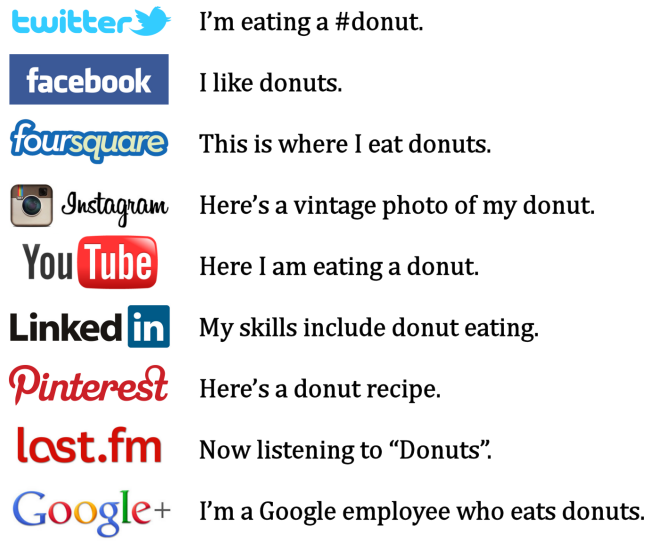
by MIMO Solutions | Internet Marketing, Social Media Explained, Social Networking
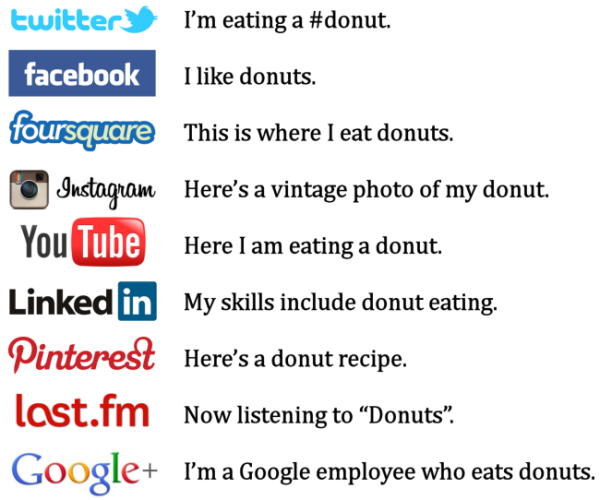
I love the “Social Media Explained” meme on the Internet.
Oops, there is nerd-term #1. A “meme” is an ongoing “inside joke” on the Internet. Google “social media explained” in Google images and you will see dozens of versions of the image above. Pardon the pun. People have done this graphic with running, and tons of other substitutes for “donuts.” So a “meme” is a running joke where people do their take on a popular Internet topic. See also “Call me, maybe” or look up any popular YouTube video and you will see hundreds of people with their own versions or spoofs.
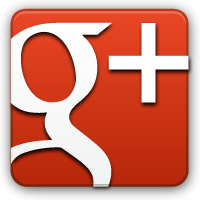 Now back to explaining Google Plus!
Now back to explaining Google Plus!
Here is pretty much everything you need to know about Google+ for business. If you want to have fun and experiment with other things in your free time, go for it!
These are the basics and necessities for companies or professional individuals on Google Plus.
Google+ or “Google Plus”
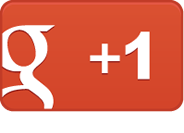 I am starting with Google Plus because it now includes Google Places’ local maps and it has been incorporated into Google’s search results with the +1 button. You HAVE TO at least create a personal account and your Local page for your business and make sure they are complete. If you want any traffic or referrals from Google, you just have to figure out how to make Google+ work for you.
I am starting with Google Plus because it now includes Google Places’ local maps and it has been incorporated into Google’s search results with the +1 button. You HAVE TO at least create a personal account and your Local page for your business and make sure they are complete. If you want any traffic or referrals from Google, you just have to figure out how to make Google+ work for you.
Google has also recently added Events to Google+ so you may be able to use this to invite and schedule some cool things. Hangouts are also a feature included that lets you create or join your own chatroom. You can get a group of people online and all “hang out” together much like a video conference or old school “chat room”.
Here is Google Plus explained:
- Google+ is cool because you can add people to “circles” and you don’t have to add people back who add you. This allows you to keep some privacy and separate the groups of people in your life and business.
- Google’s +1 button is basically similar to the “like” button on Facebook. A +1 means you like or are adding your vote of +1 to the topic or website. The more votes you get, the higher the search rankings and the more people see your post.
- Creating your profile and a local page for your business are pretty simple. Google will guide you through the process and even auto-fill some stuff if you have an account there already. Make sure you claim your local business page, because if you are in the phone book, chances are there is already a listing for you.
- Follow the instructions to add your page badge to your website. This helps Google link your account and website together and verify official pages for you business. Also, on you profile pages be sure to include links in the websites or contributor categories for all your social media accounts and websites. This helps Google link all your stuff together and it will improve the search results for your business.
- Finally, start adding people to you circles. The cool thing about circles is that you can pretty much add anyone and as many as you want without getting overwhelmed or over-sharing your privacy, because you can sort them. I recommend 4-5 circles: Family and Friends, Customers, Leads, Acquaintances, and referral partners or team members. That way you can share baby pictures or party pics with friends or family and inside information with team members without sharing it with the world. Just know that “public posts” go to everyone.
- There are no sharing tools or linked accounts with Google Plus yet, so you are going to have to log in and post here separately and update your account on at least a weekly basis.
You can visit the help section or email me with any questions while getting started.
There are not a lot of people officially on Google Plus yet, but the number is growing very fast because so many people have Google accounts for Gmail, YouTube, and their other services. The good news is you get to be on the cutting edge for awhile, and there are plenty of good account names available. Which is a plus for Google.
Stay tuned, over then next few weeks I plan to explain the other social media sites!

 Presented by Mike Montague
Presented by Mike Montague![]() View Mike Montague’s LinkedIn profile Mike is our resident Internet Marketing & Social Media Expert. He has worked as the Promotions & Website Coordinator for Cumulus Radio Stations and the Chiefs Radio Network, and Internet Marketing Director at Ad Trends Advertising. He has consulted for several international franchises and hundreds of small businesses, and spoken to countless groups about maximizing social media and the rest of their Internet presence. Mike is an associate at Sandler Training, where he provides training and coaching on management, sales and customer service. With over 230 offices in 28 different countries, Mike has collected LinkedIn prospecting best practices from around the world to share with workshop participants.
View Mike Montague’s LinkedIn profile Mike is our resident Internet Marketing & Social Media Expert. He has worked as the Promotions & Website Coordinator for Cumulus Radio Stations and the Chiefs Radio Network, and Internet Marketing Director at Ad Trends Advertising. He has consulted for several international franchises and hundreds of small businesses, and spoken to countless groups about maximizing social media and the rest of their Internet presence. Mike is an associate at Sandler Training, where he provides training and coaching on management, sales and customer service. With over 230 offices in 28 different countries, Mike has collected LinkedIn prospecting best practices from around the world to share with workshop participants. Investment: $149
Investment: $149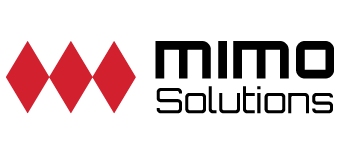

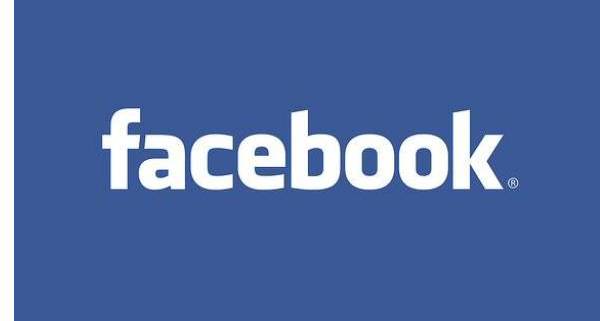


 Getting started on Twitter Explained:
Getting started on Twitter Explained:



 Now back to explaining Google Plus!
Now back to explaining Google Plus! I am starting with
I am starting with